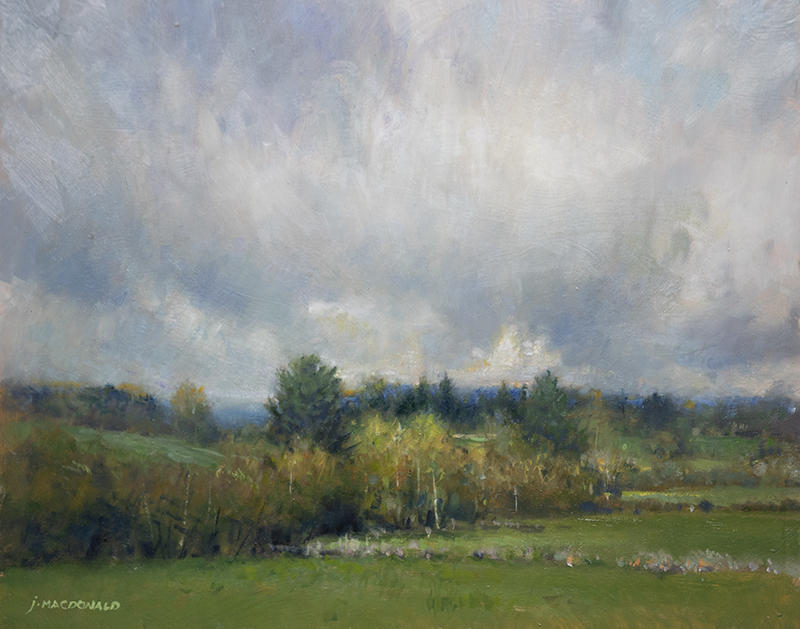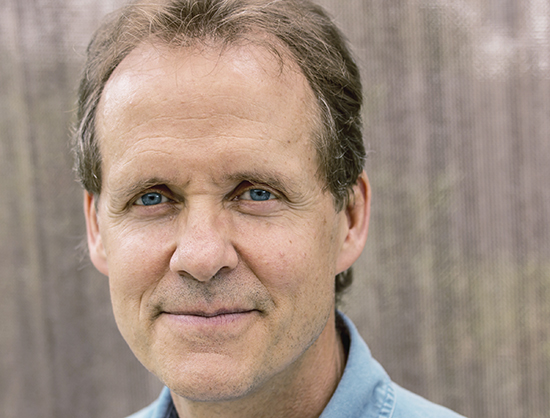
The Sublime Nature Beauty Portrayed by John MacDonald
The prominent American landscape painter, John MacDonald, is known for his soft tones, subtle brushstrokes, smooth edges, and quiet atmosphere. Influenced by the early Impressionist masters and the later Tonalists, John’s paintings express his unique style exhibiting refined intuitions toward fleeting changes in nature while reflecting introspective sensibility for inner peace and spiritual sublimation. They are subtle, contemplative, and fluid, often imparting viewers with a sense of natural beauty and tranquility.
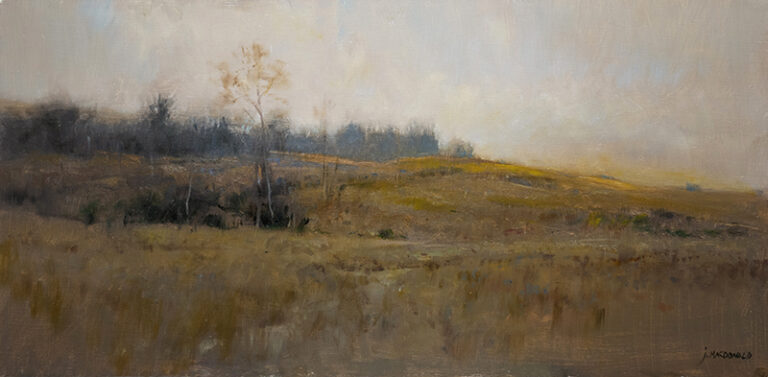
John’s paintings have a rich visual language. He vividly expresses the varying degrees of color changes by the environment under the influence of light. What is rare is that his paintings can achieve a quiet and harmonious state amidst change. John has a unique perspective on landscape painting; in addition to basic painting techniques, he believes in the importance of “values - (light and shade) the illusion of light, space, and form created in painting”; the quality of a painting depends on the painter’s mastery and control of this aspect.
We are honored to have the following conversation with John. He not only shared his journey as a painter, but also provided valuable insights into painting techniques and theories, which benefited us tremendously.
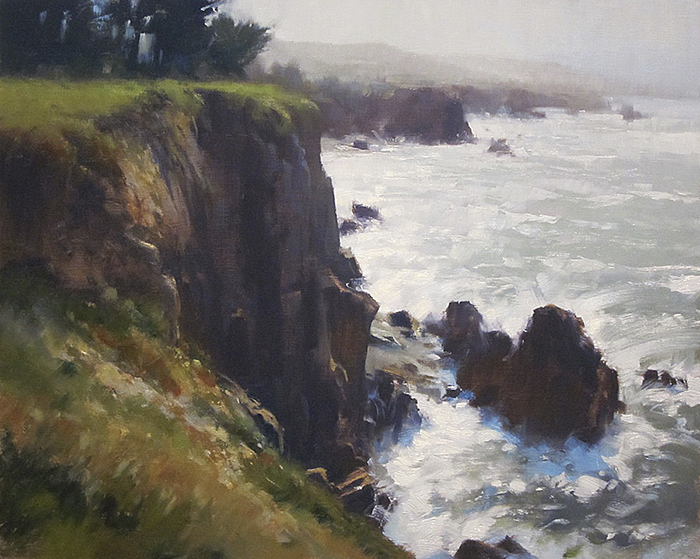
Q: Your plein air paintings are so fascinating and captivating. Please share with us the path you took to become such a wonderful artist.
A: Like most artists, my love of drawing and painting began at an early age. At university, I was a fine arts major, then went on to study printmaking in France and earned a graduate degree in painting and drawing. After marrying and the birth of our first son, feeling the need to contribute to the family’s income, I moved into freelance illustration. After a career as an illustrator, I returned to full-time painting in the early 2010’s.
I’ve always felt a deep connection to nature. In retrospect, becoming a landscape painter was inevitable, and yet, years ago, I assumed I’d eventually move away from landscape painting, if not from representational work altogether. Instead, I’ve only found the subject increasingly more challenging and meaningful.
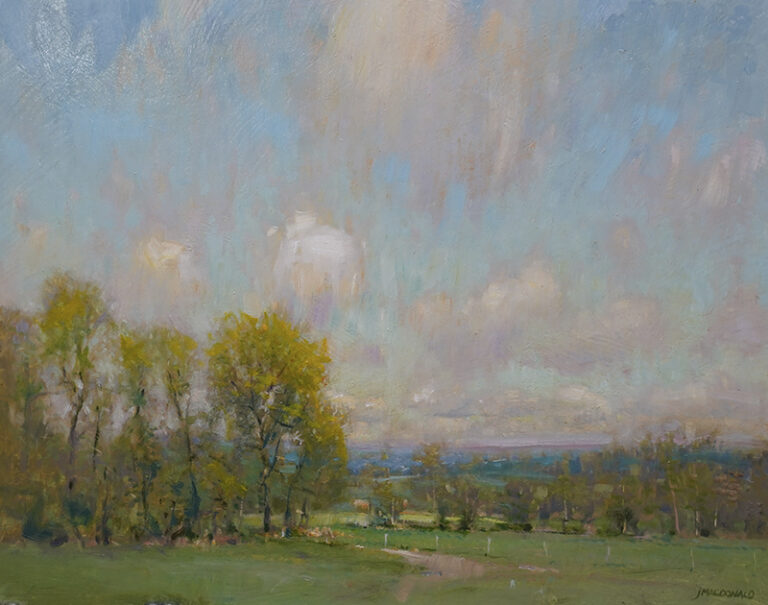
Q: What is painting to you? What do you try to communicate with the audience through your painting?
A: After 40 years of painting, I no longer think much about the finished work nor what message it contains. Painting has increasingly become an excuse to lose myself in a state of total absorption in nature – in the changing light, color, and forms of a single moment in nature, removed from all things human. It’s now as much a spiritual experience for me as an aesthetic experience. If there’s a message in my paintings, it would be in keeping with the art movement of the mid-19th and early 20th centuries know as Tonalism. It’s about mood – a quiet contemplation of the landscape at a specific place and time.
Q: Please share with us the components that you regard as vital to dynamic landscape paintings.
A: There are two vital components of every painting: the subjective, specific message of the painting (the intention), and the objective\universal structure of the painting (the technique); the success of the latter depends on the five elements found in every painting regardless of genre: composition, values, colors, edges, and details.
When the technique and painting structure meld with the message in a seamless whole, the result is a painting that can engage and move the viewer. There’s nothing unique to creating a “dynamic” landscape that differs from figure paintings, still lifes, seascapes, or cityscapes. The success of any painting depends on the basic elements of the visual language.
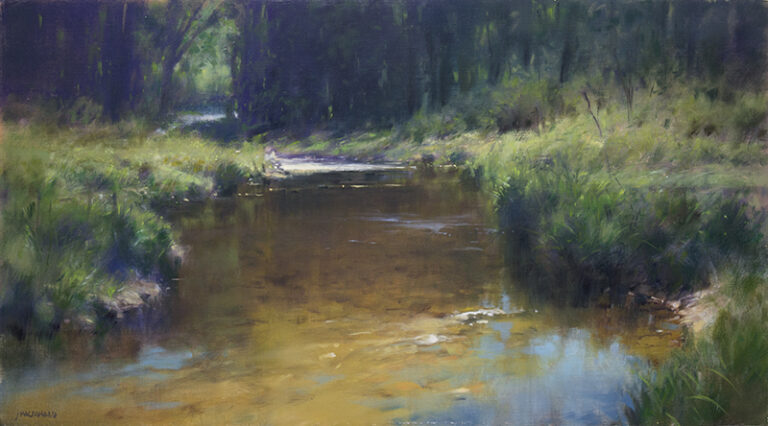
Q: You have talked about values in paintings in your Youtube video. Please tell us what you mean by that and how you prioritize them.
A: It is the values (lights and darks) that create the illusion of light, space, and form in a painting. (Even purely abstract paintings rely on values to create the structure of the work.) There are two kinds of values: foundation (or primary) values and secondary values. The foundation values are the 2-5 values of the large and essential shapes that comprise the composition. A simple landscape painting can consist of nothing more than a light sky and darker ground. In that case, there are two foundation values. Identifying the foundation values and their relationships are critical when beginning a painting.
The secondary values are the value changes (both light and dark) that occur within the foundation values and that are restrained by them. They often represent the highlights and shadows, textures, and forms within a section of the landscape. Controlling the range of the secondary values on the value scale is essential to preserving the structure of the painting.
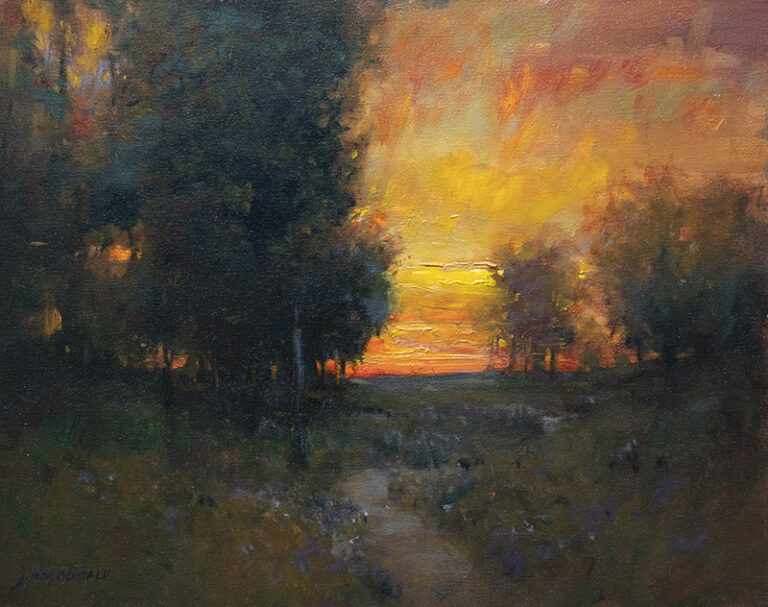
Q: Please share with us your inspirational sources such as persons, books, paintings, or places.
A: Nature and the natural landscape have always been the bedrock from which I derive the inspiration and meaning of my work. Were I not an artist, nature would still be my church and religion. As for artistic influences, my earliest favorites were two opposites: George Inness and Gustav Klimt. Of the “Old Masters,” I continue to learn from the Tonalists: Inness, J. Francis Murphy, and Dwight Tryon; from Monet and Sargent; from the Australian Arthur Streeton, and from a multitude of others. My favorite contemporary artists, among many, are David Sharpe, Dennis Sheehan, Brian Sweetland, Denys Gorodnychyi, and Vladimir Kirillov.
Q: Please share with us some of the paintings that are most memorable to you and why.
A: My favorite paintings, invariably, are those that were long, protracted struggles, that I bled for. It’s always a joy when a painting comes together quickly, that seems to paint itself. When that happens, I don’t complain! But when a painting has become a labor of love, that pushes me to my edge technically and psychologically (frustration, despair, doubt, etc.), those are the successes I most remember.
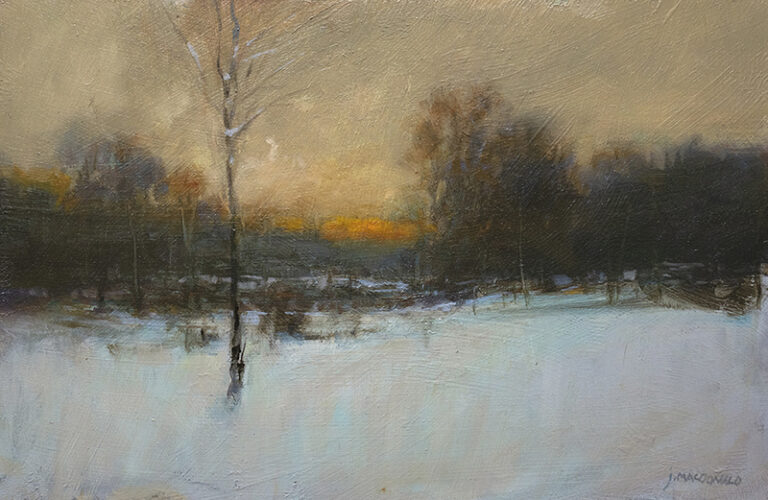
Q: What is your opinion about painting from photos?
A: The current conflict between plein air purists and those painters who use photos is completely misplaced. Whether standing in a field or viewing a photo on a computer monitor, both artists are using their eyes and looking at visual reference. Everything is just visual reference. The real question is whether we’re simply copying what we see or using our imagination, creativity, and soul to create a painting.
There are certainly advantages in painting on location. The color is infinite in its variety and richness – no camera can begin to capture that reality. And being physically immersed in the landscape, with the wind, the smells, and all the richness of nature that surrounds us can lend authenticity to the work. I prefer the full body experience of being on location. But there are also advantages to working in the studio from reference. The artist has the luxury of time – the time to create a composition, work out the value structure, etc. – without the constraints of changes in light and weather that often occur outdoors.
Ultimately, it’s the painting that matters and not what was used as reference to create it. The Sistine Ceiling, Rembrandt’s “Night Watch,” Van Gogh’s “Starry Night,” the “Mona Lisa”, etc. were not painted in a single session plein air.
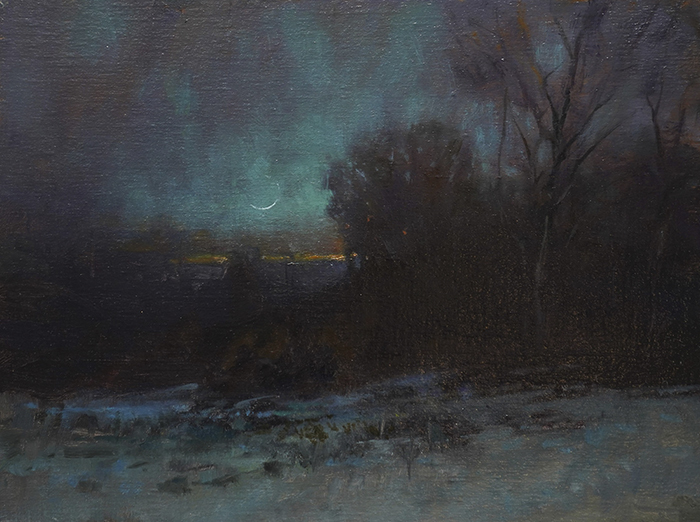
Q: Is there anything else you would like to tell our readers?
A: If you’re an experienced painter (or writer, filmmaker, musician, fabric artists, etc.), you already know what I’m talking about.
If you’re a beginner painter, always keep working on the basics of composition, value, color, etc. Focus on the verb “painting” rather than the noun “painting.” That is, don’t get obsessed with the finished product – it’s just a painting. Remain rooted in the joy of painting, regardless of its inevitable ups and downs. All of us produce piles of failed paintings. (I’m very good at creating mediocre paintings!) It’s part of the process. Just keep painting.
*****
We thank John for taking the time out of his busy schedule to show us his artistic journey. If you want to know more about his painting and teaching, you can visit his website.
John’s website
